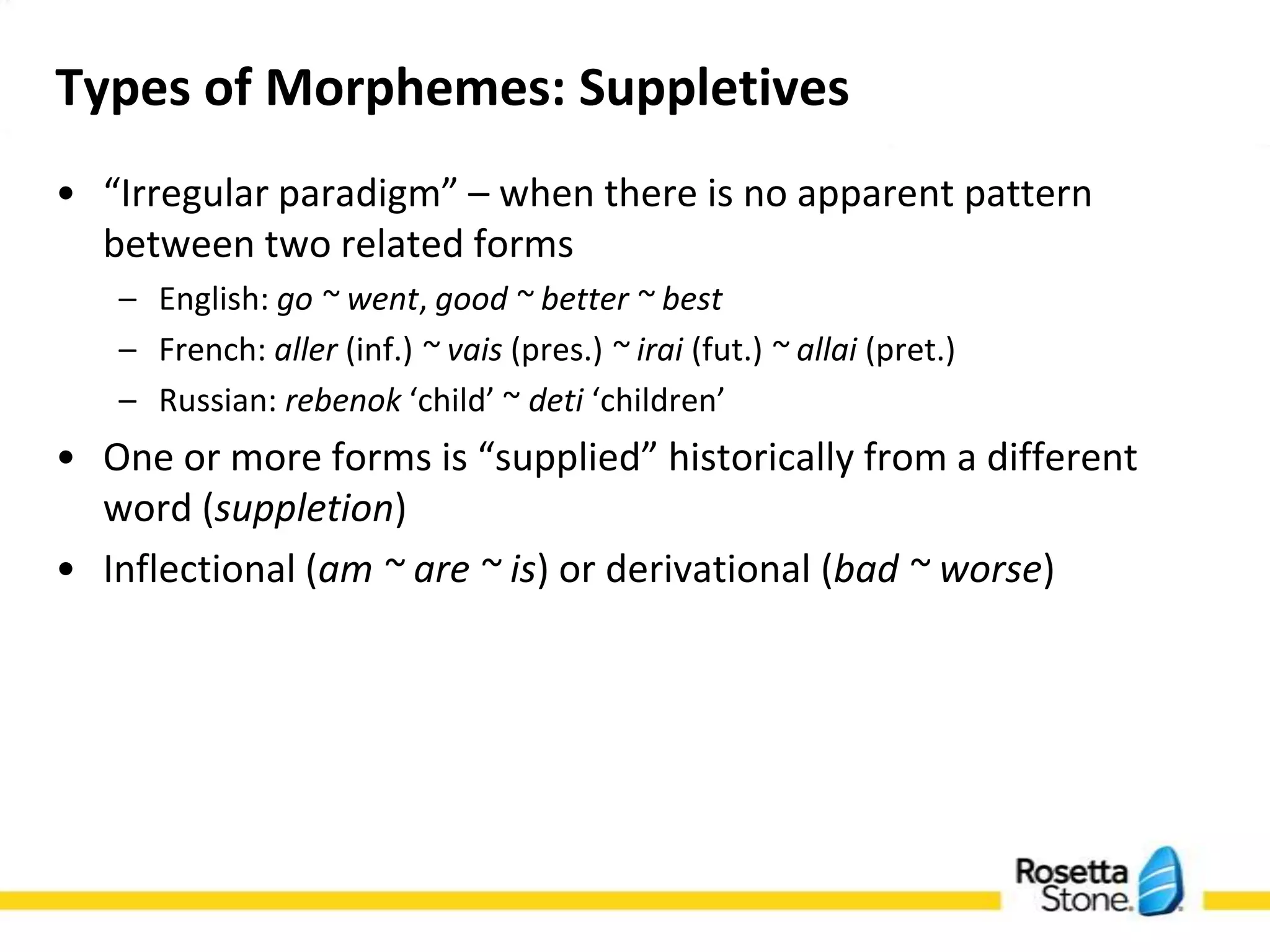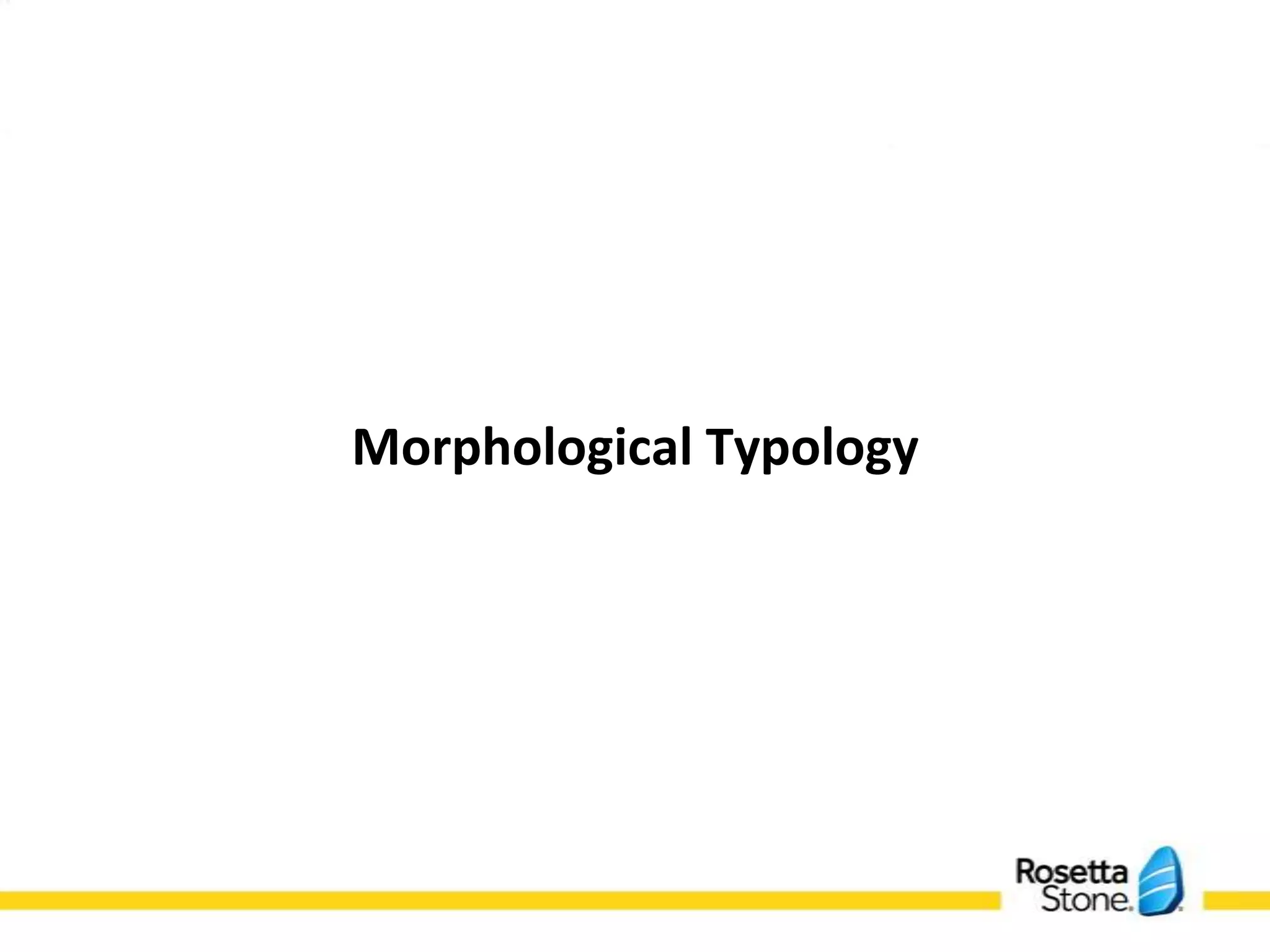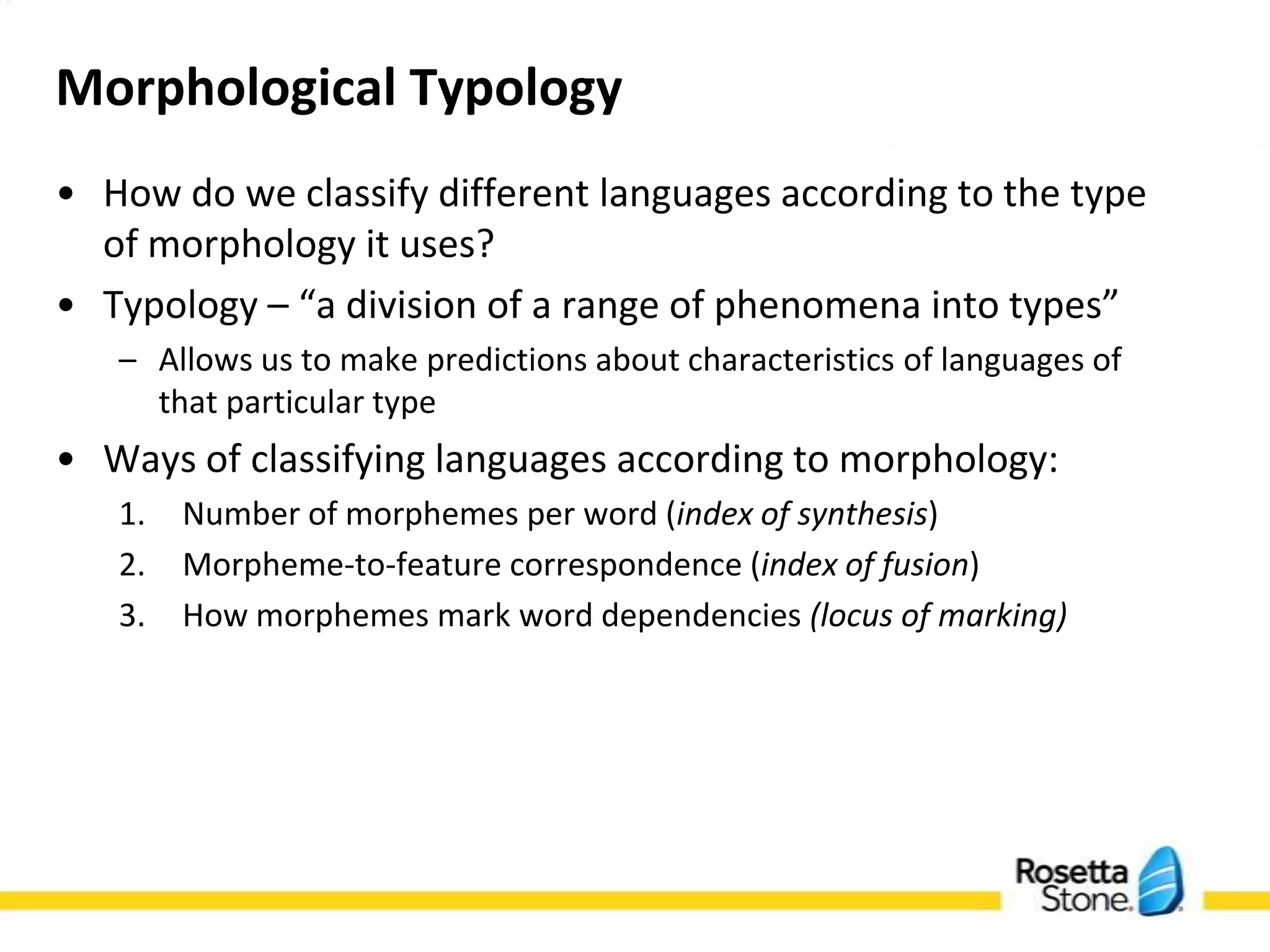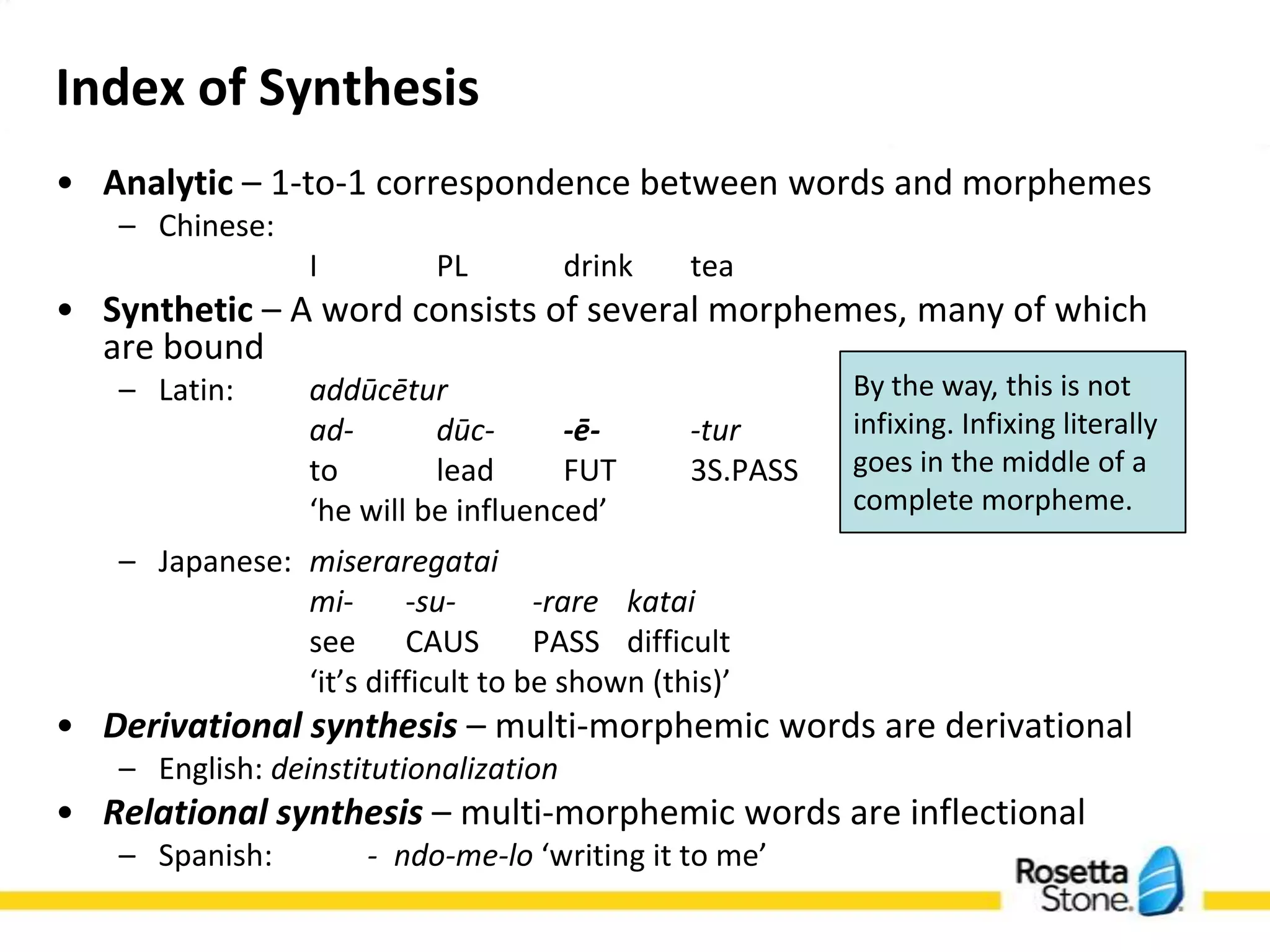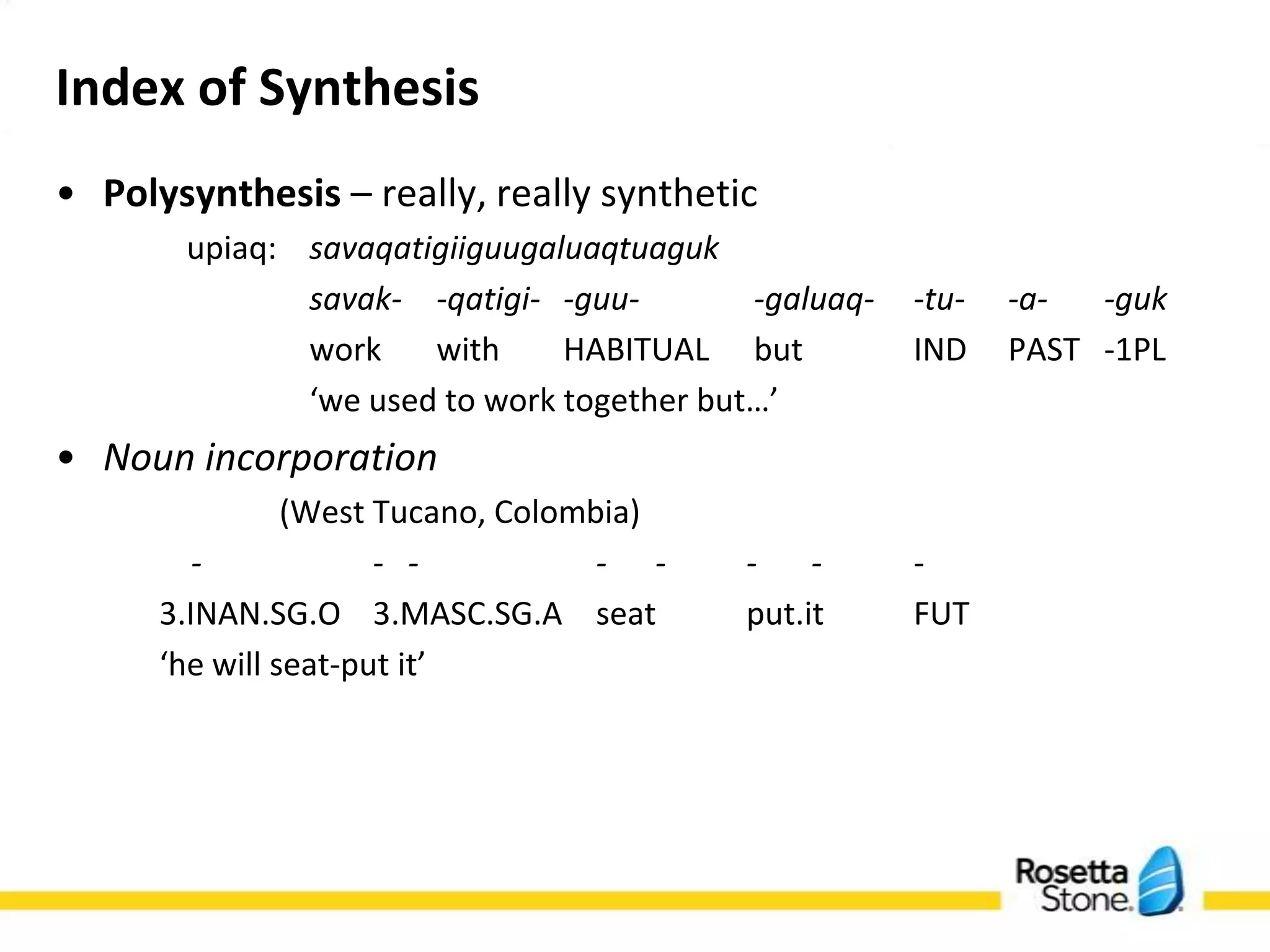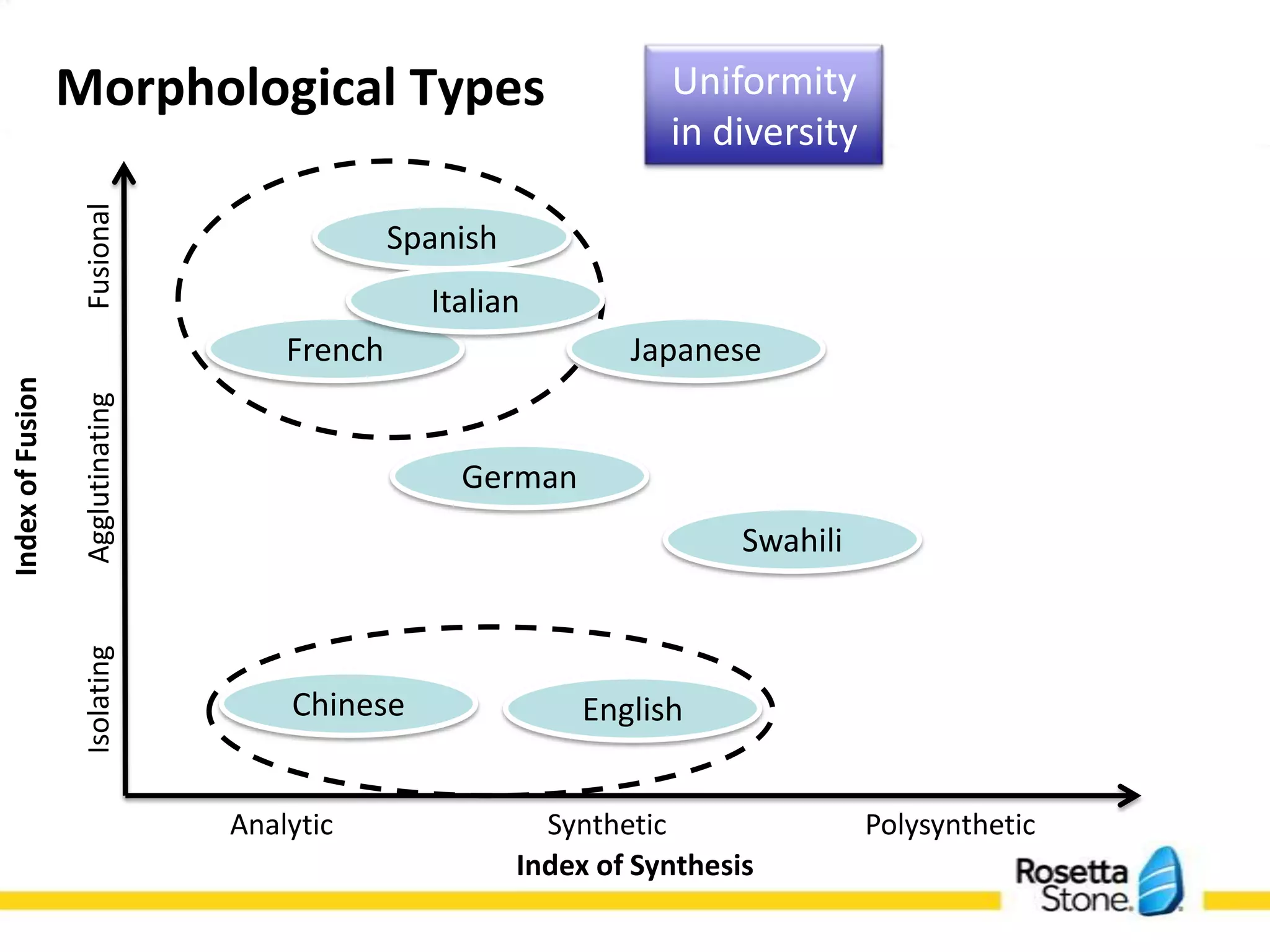The document is an introduction to morphological typology, exploring the study of language similarities and differences. It covers key concepts in morphology, including morphemes, inflection, derivation, and the classification of languages based on morphological characteristics. It highlights examples from various languages to illustrate universal features, particularly focusing on color terms and the structure of morphemes.

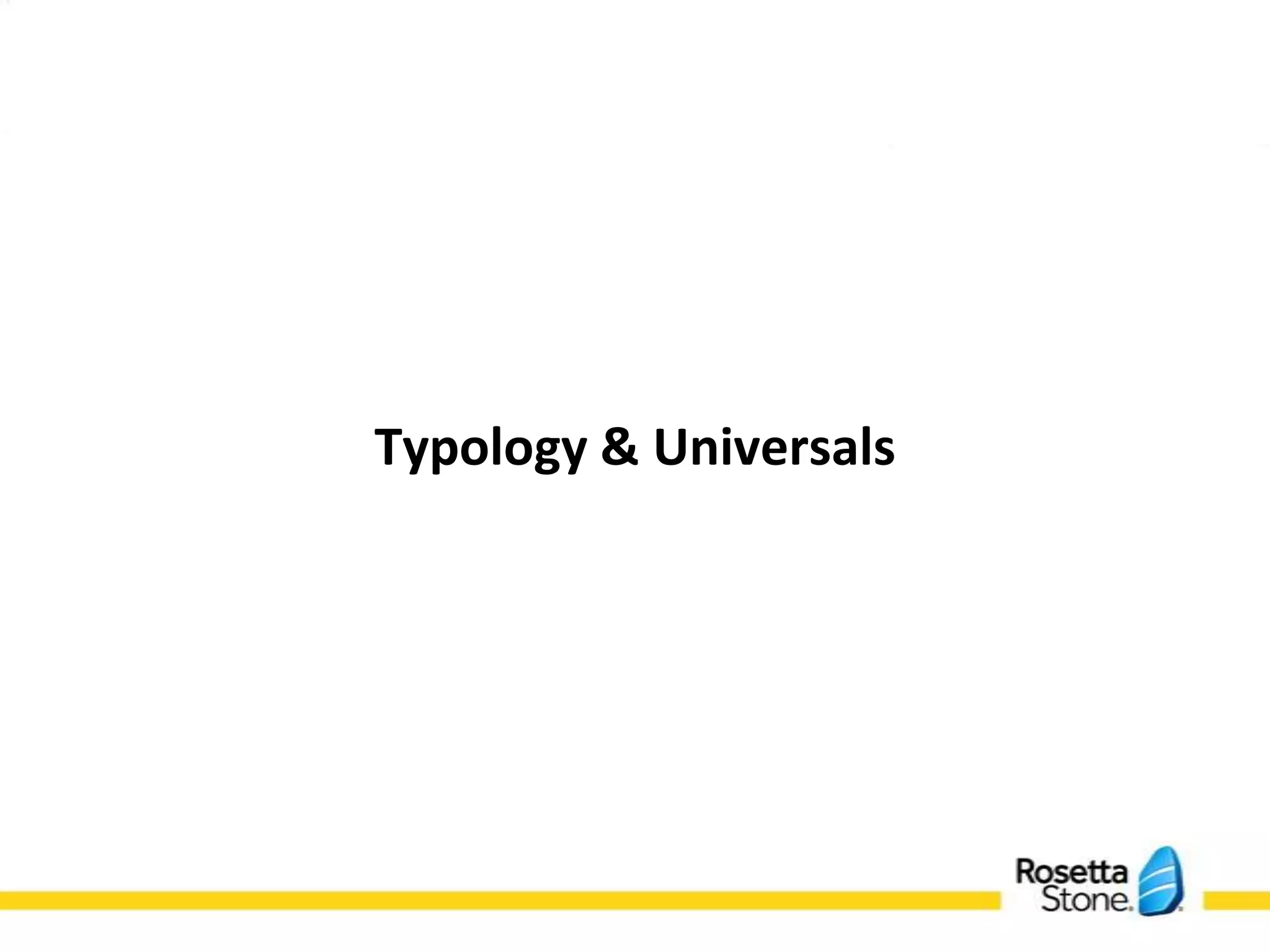
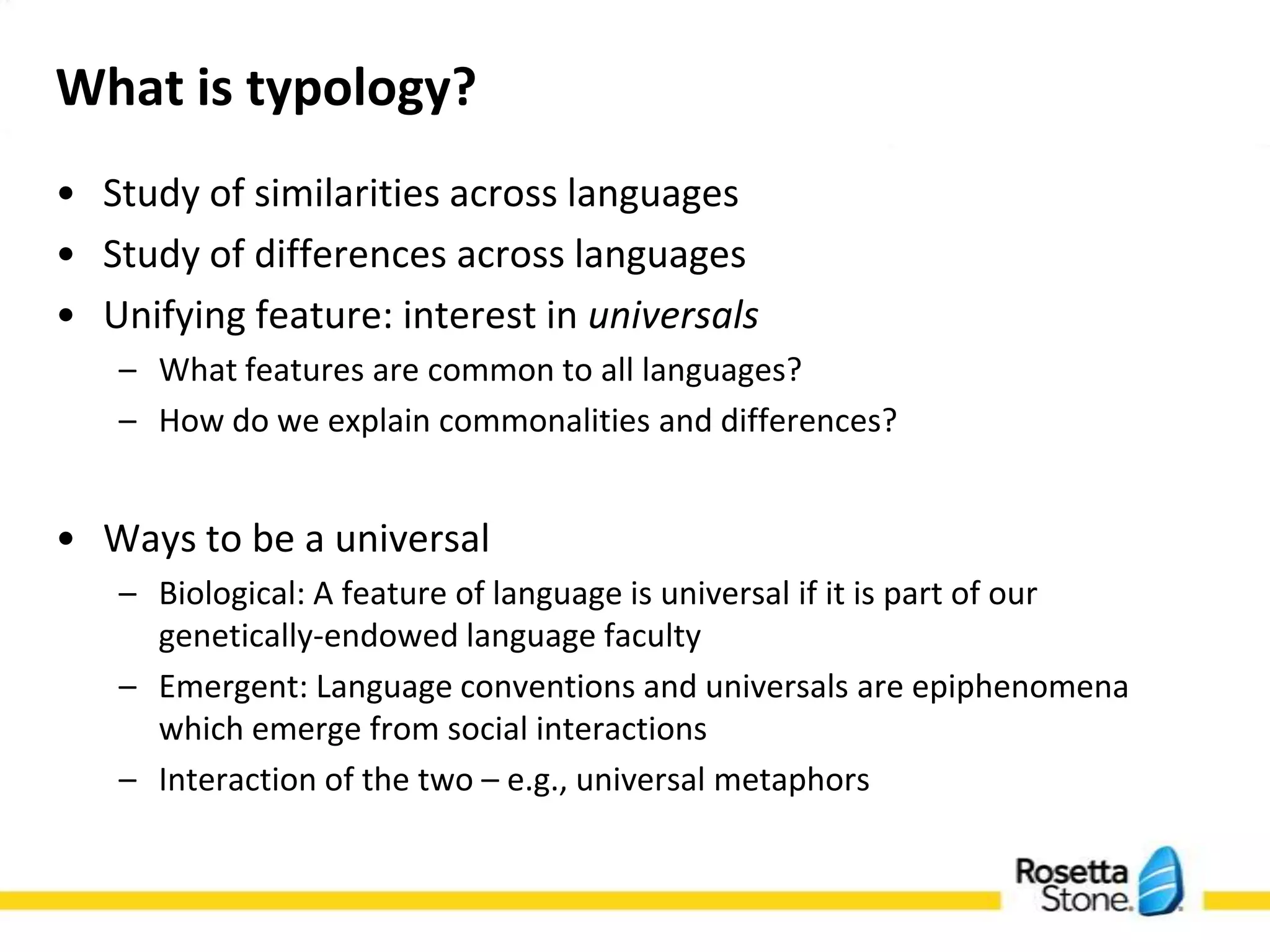
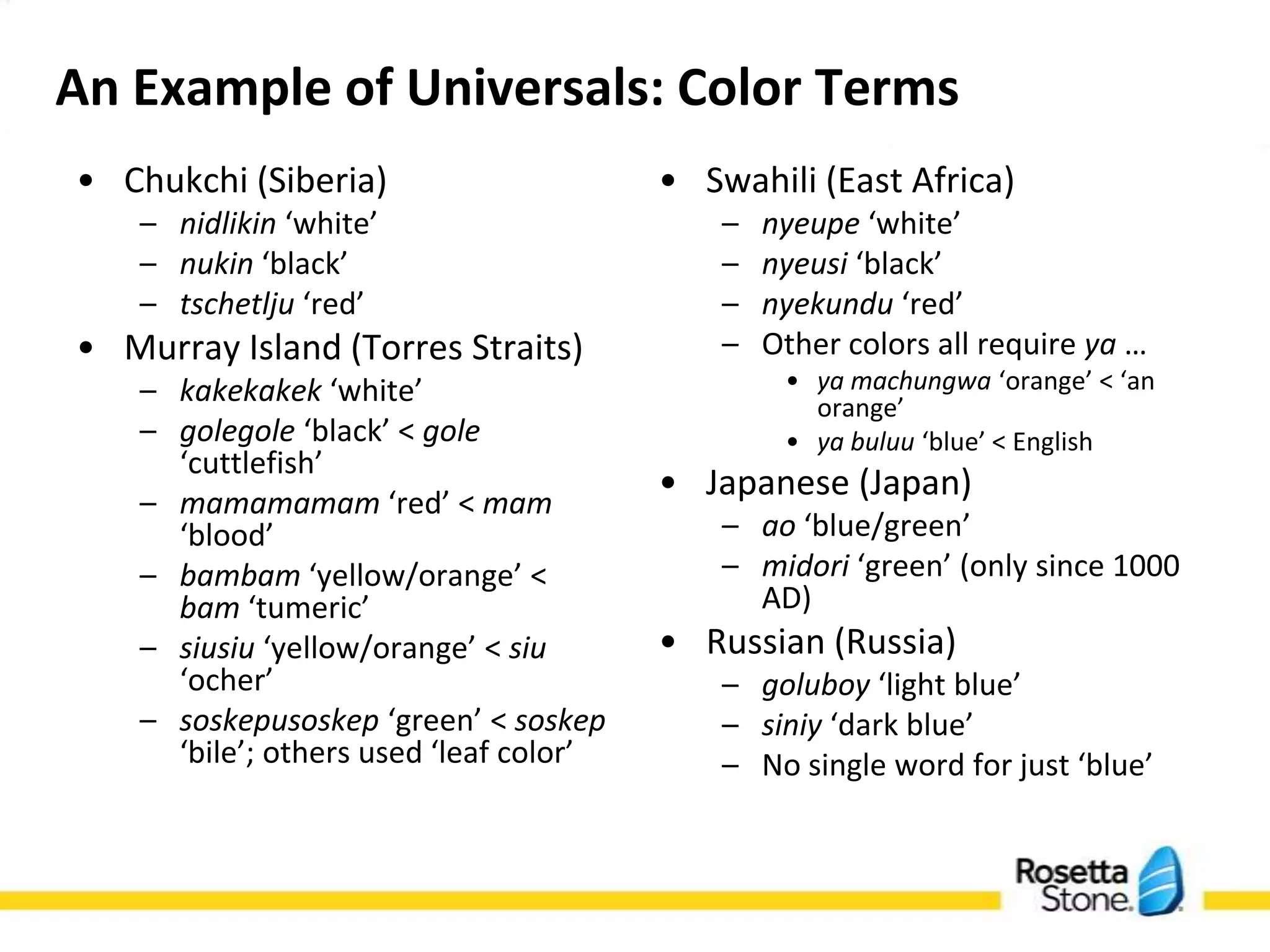
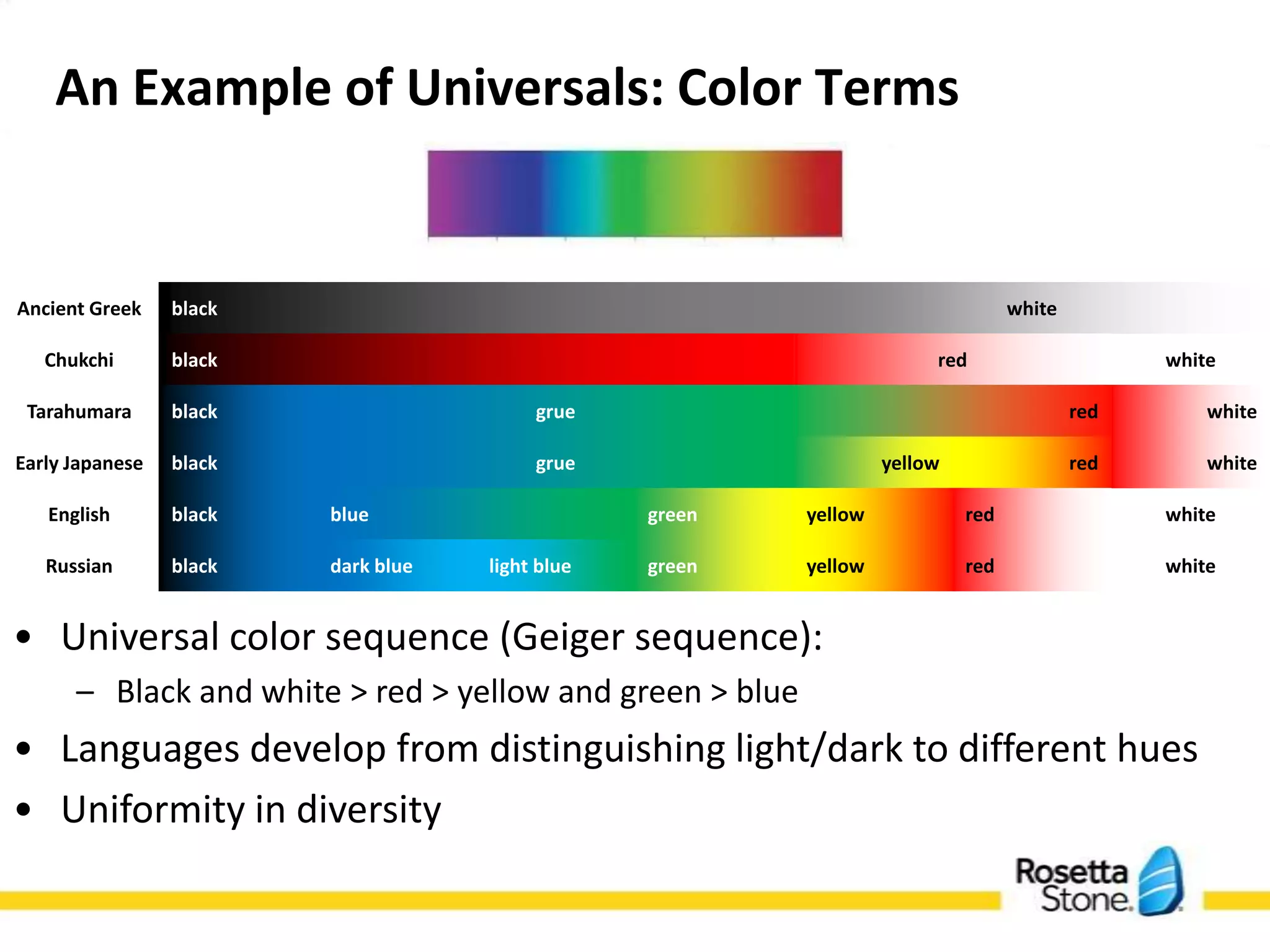
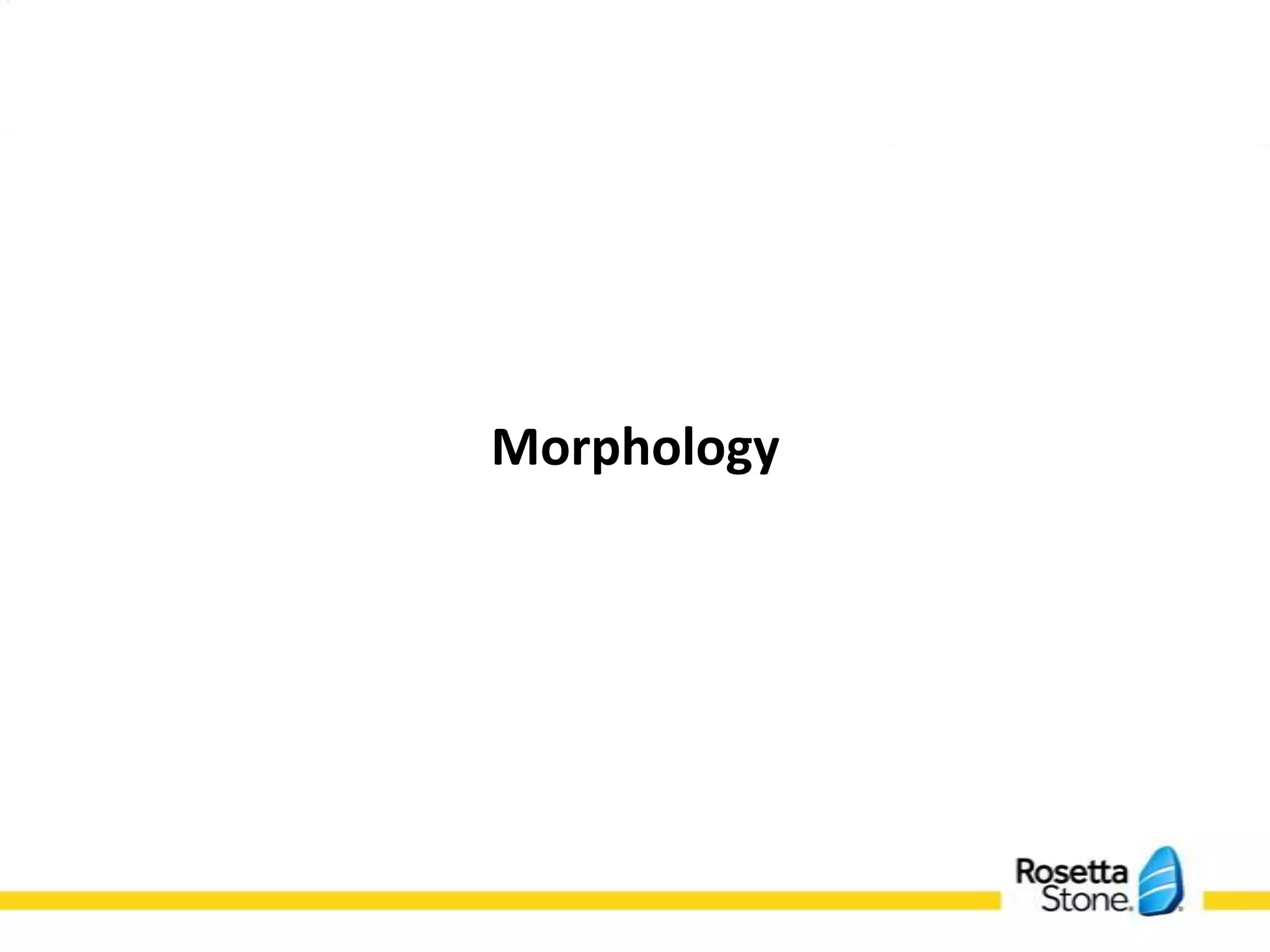
![Basic Concepts in Morphology
• Morphology – (the study of) form-meaning relationships in words
[tri]
• Morpheme – minimal unit of meaning; the pieces of a word
– anti-dis-establish-ment-ari-an-ism
– habl-ando-me ‘speaking to me’
– - ng-jī ‘camera’ (lit. take-picture machine)
– Un-kamerad-schaft-lich-keit ‘uncompanionshipliness’
– precipitevol-issima-mente ‘like someone who acts very hastily’
• What about receive? Raspberry?](https://image.slidesharecdn.com/hieber-anintroductiontotypologyparti-morphologicaltypology-120621230159-phpapp01/75/Hieber-An-Introduction-to-Typology-Part-I-Morphological-Typology-7-2048.jpg)
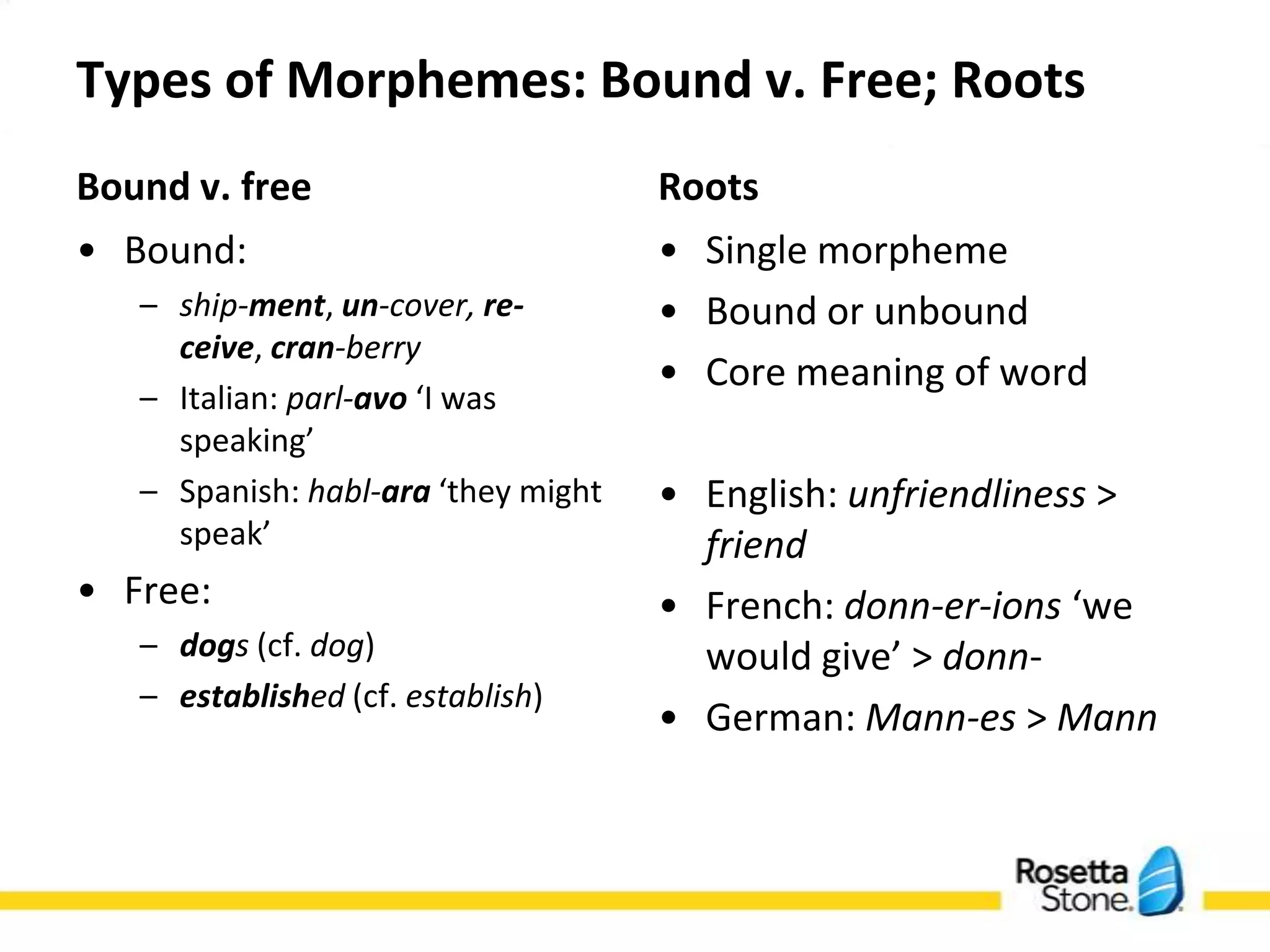
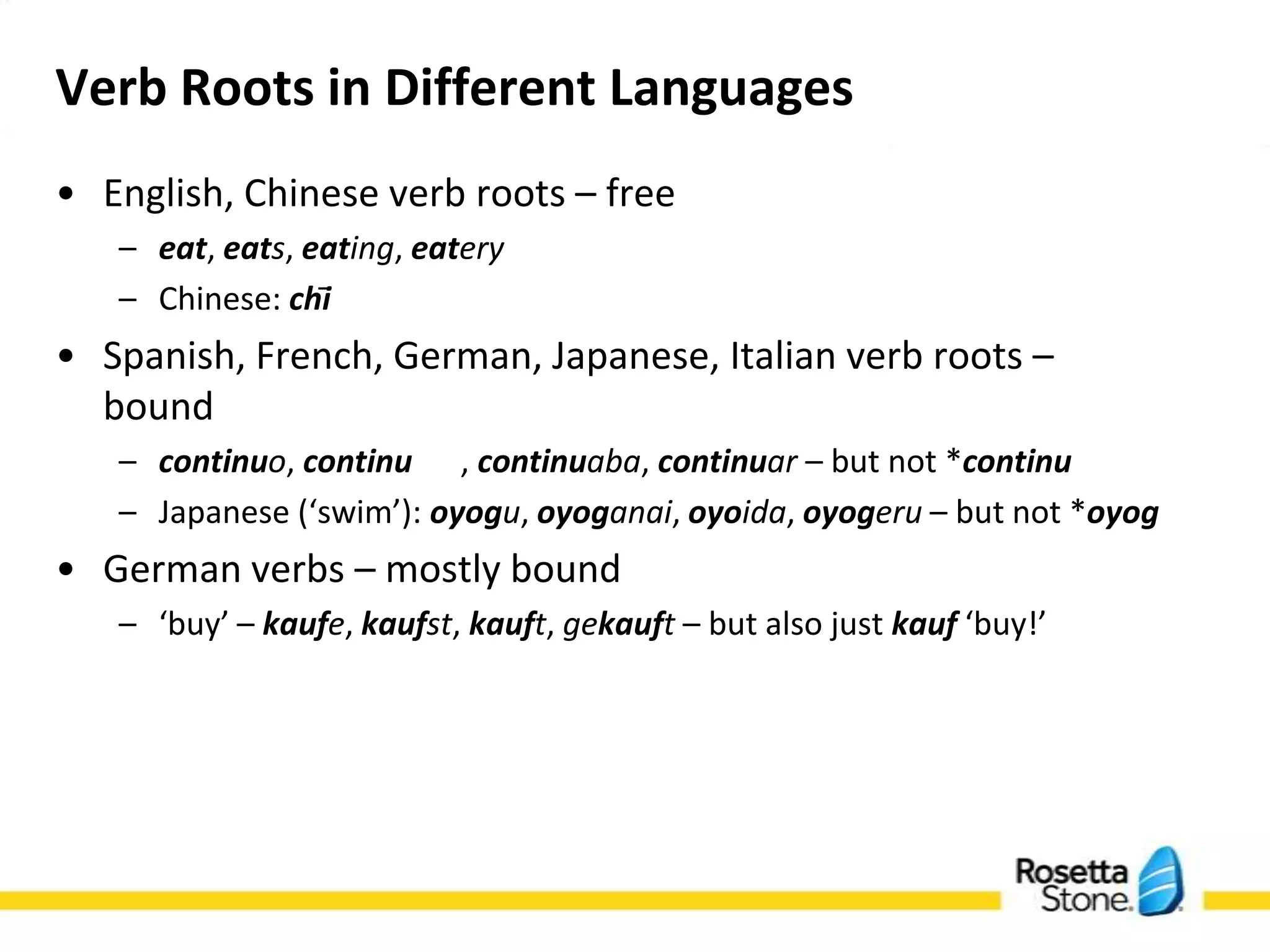

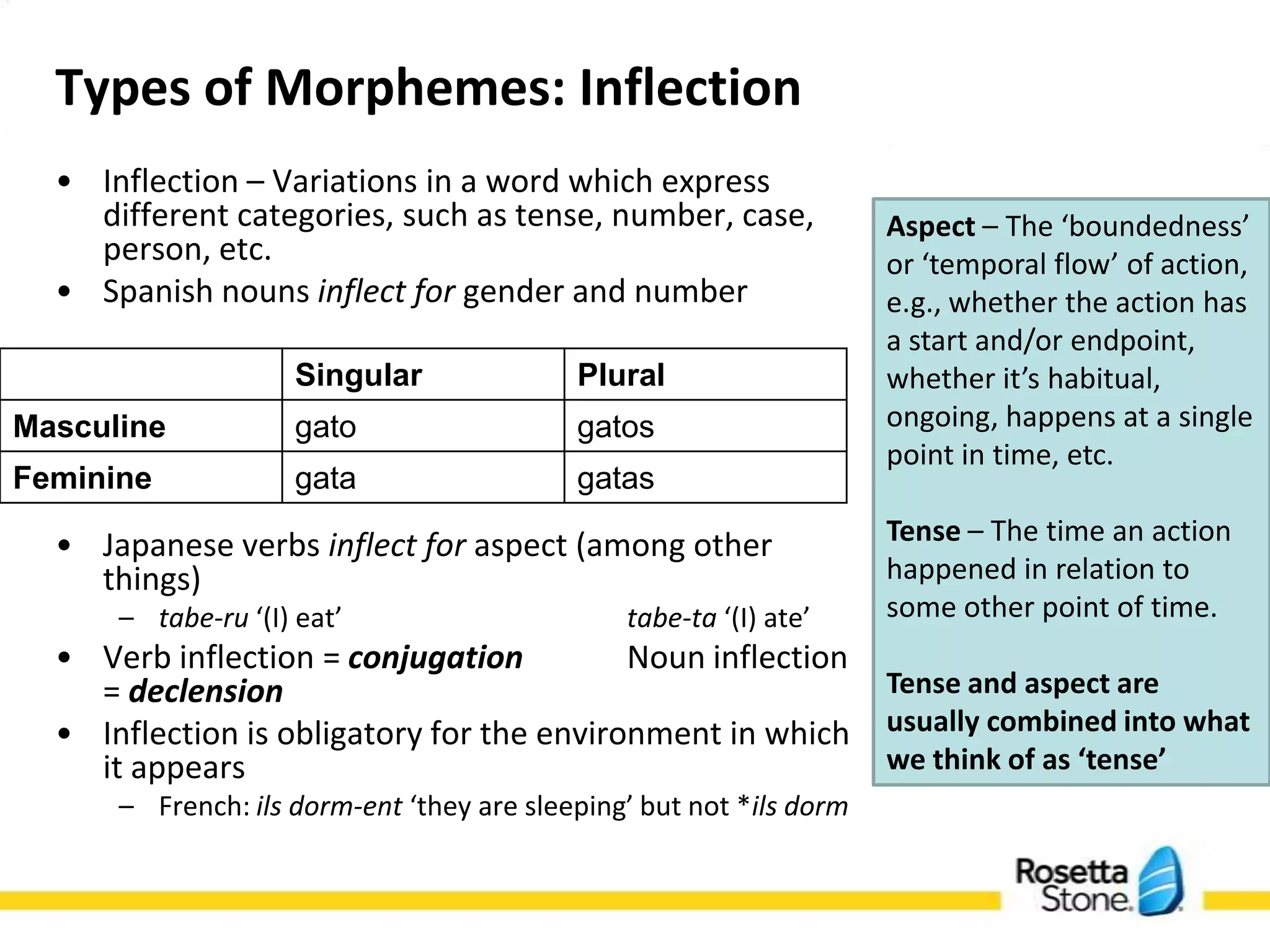
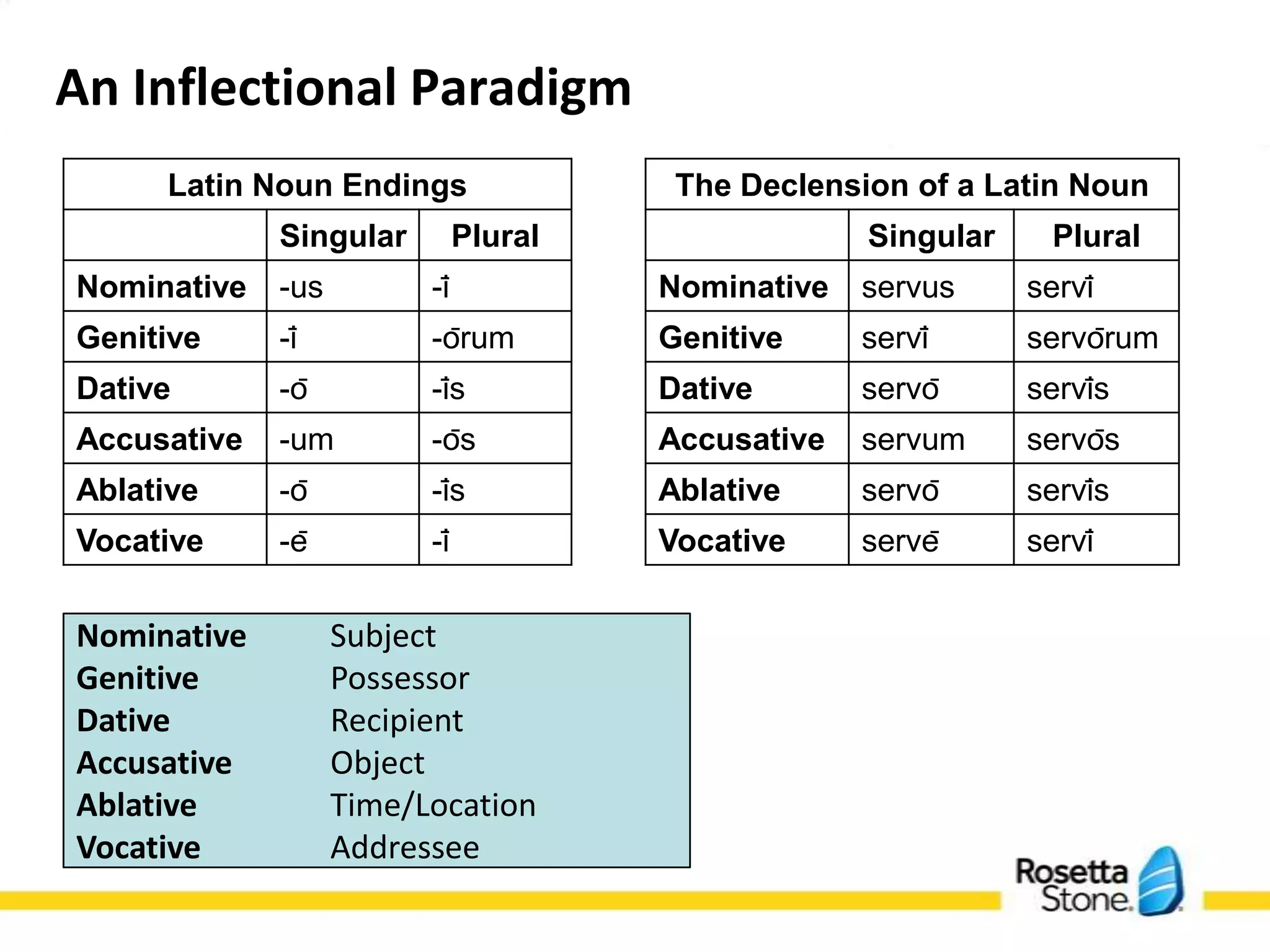
![Types of Morphemes: Derivation
• Creates new words (as opposed to inflection, which creates
different forms of the same word)
– institute > institution
– write > rewrite
• Often changes the category of the word
– ct v. nvict; t v. rmit(zero derivation/conversion)
• But not always (category-preserving)
– boy > boyhood
– lion > lioness
• ROOT + DERIVATION > STEM + INFLECTION > WORD
– [DERIVATION de-] + [ROOT friend] > [STEM defriend] + [INFLECTION –ed] > defriended
• Can be recursive: [[friend + ly] + est] > friendliest](https://image.slidesharecdn.com/hieber-anintroductiontotypologyparti-morphologicaltypology-120621230159-phpapp01/75/Hieber-An-Introduction-to-Typology-Part-I-Morphological-Typology-13-2048.jpg)
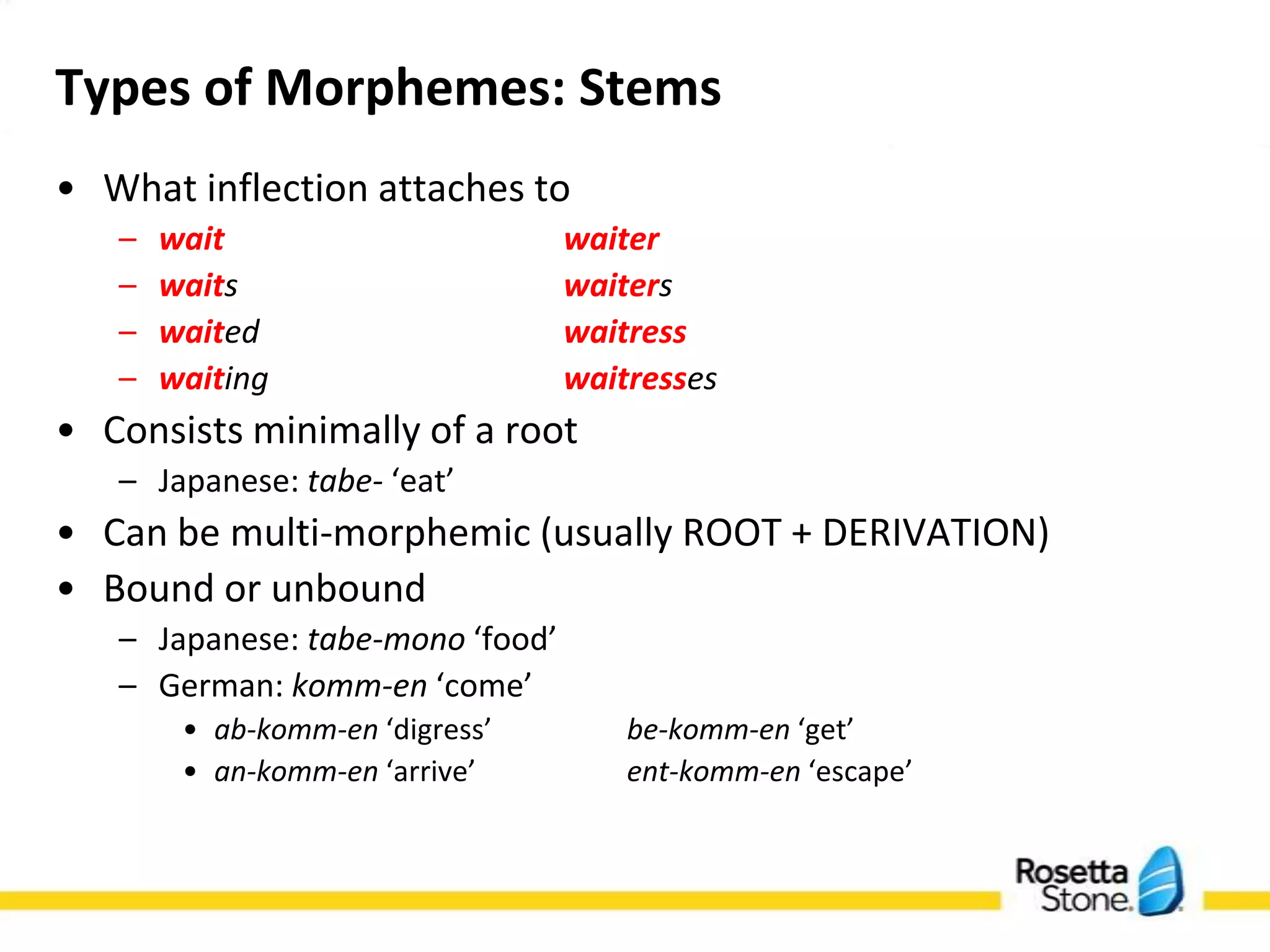
![Examples of Derivation
• English: en-rich, en-able, en-tangle
• English: final-ize, social-ize, critic-ize, subsid-ize
• English: telephone [someone] v. a telephone; I run v. a run
• Chinese: ng shuǐguǒ de
grow fruit NOMINALIZER
‘fruit-grower’
• Chinese: chī zhě
eat NOMINALIZER
‘he who eats’
• German: lach-en ‘laughing’
ge-läch-ter ‘laughter’
lach-haft ‘laughable’](https://image.slidesharecdn.com/hieber-anintroductiontotypologyparti-morphologicaltypology-120621230159-phpapp01/75/Hieber-An-Introduction-to-Typology-Part-I-Morphological-Typology-15-2048.jpg)
![Types of Morphemes: Clitics
• The English -’s possessive (genitive)
– [Matt]’s dog
– [The man]’s dog
– [The man and the woman]’s dog
– [The man who I saw at the restaurant]’s dog
• Compare: the German genitive case
– Claudias Buch ‘Claudia’s book’
– der Hund des Mannes ‘the man’s dog’
– der Hund des Mannes und der Frau ‘the man and
woman’s dog’
• Clitics operate at the phrase level
• Another example: English the and a](https://image.slidesharecdn.com/hieber-anintroductiontotypologyparti-morphologicaltypology-120621230159-phpapp01/75/Hieber-An-Introduction-to-Typology-Part-I-Morphological-Typology-16-2048.jpg)

